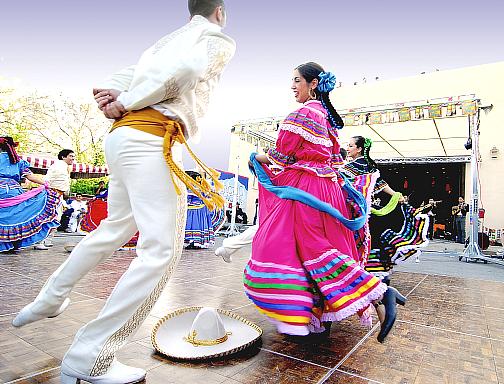This image depicts a traditional dance of Mexico known as the Jarabe Tapatío or more commonly, the Mexican Hat Dance. The Jarabe Tapatío originated in the state of Jalisco as early as the 18th century. Prior to the War of Independence, the dance was banned because it was seen as defiant to Spanish authorities and morally offensive. The dance grew in popularity following the War of Independence; it was a uniting force for the Mexican people. With it's growth in popularity, it became the "national dance" of Mexico. It is a symbol of the Mexican people and their culture both inside and outside the country. The Jarabe Tapatío was introduced to the world after the famous Russian ballet dancer, Anna Pavlova, made it a permanent part of her dance repertoire. This dance is still taught to school children in Mexíco today.
The dance signifies the courtship between a man and woman. At the start of the dance, the woman rejects the man's advances, but as the dance progresses, she willing accepts his gestures. The man and woman are dressed in traditional Mexican garb. The large flowing dresses the women wear is known as the "China Poblana," and the dress of the men is that of charros, or what we would call Mexican cowboys.
I have seen this dance performed on several occasions and performed it once myself many years ago. I can't help but start moving when I hear the familiar tune of the Jarabe Tapatío. This dance represents my culture, and more importantly, where my family comes from...Jalisco! (I have also included a video of the dance.)

No comments:
Post a Comment